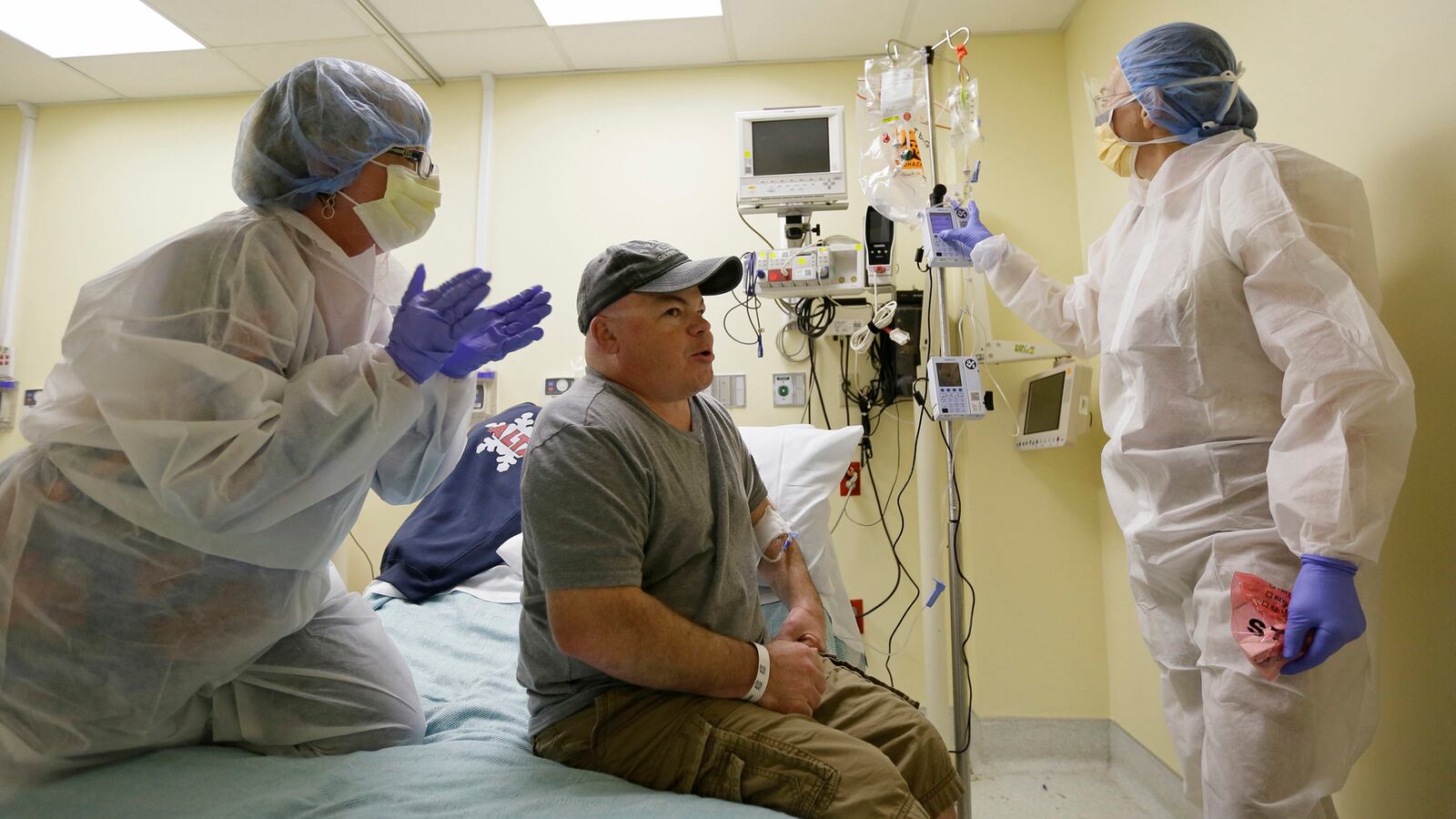For the first time ever, scientists have edited genes inside a person in an attempt to cure disease, the Associated Press reports.
Brian Madeux, a 44-year-old suffering from Hunter syndrome, was given billions of copies of a corrective gene and a tool that will slice the gene at the precise spot on Monday in UCSF Benioff Children’s Hospital in Oakland, California.
“It’s kind of humbling,” Madeux said of being the first person to try this method. “I’m willing to take that risk. Hopefully it will help me and other people.”
Hunter syndrome is a genetic disease inherited from from the X-chromosome that leads to a buildup of carbohydrates called glycosaminoglycans (GAG) throughout the body due to an enzyme not working properly. That buildup subjects toddlers to frequent colds, distorts their faces with flattened foreheads, affects bones and joints, and usually causes heart problems severe enough to kill a person by their 20s.
Madeux has made it to his forties, a miracle in and of itself. Cognitive and neurological problems are a common side effect that Madeux suffers from, eased by weekly IV doses that can cost as much as $400,000. He’s been part of a string of experimental therapies to deal with his consistent onslaught of health issues that nearly kill him, including bronchitis and pneumonia just last year that broke his airways so badly, he couldn’t breathe. “It seems like I had a surgery every other year of my life,” he told the AP. “I was drowning in my secretions, I couldn’t cough it out.”
Previously, genes have been edited at the embryo level or have been isolated outside the body for editing prior to being re-injected. Monday’s experimental attempt is revolutionary for genes being edited within a person. That’s something that harkens back to Jesse Gelsinger, the 18-year-old boy who similarly had a genetic disease which was treated with a novel therapy: an injection that would enter his liver cells and re-program them so that he wouldn’t have the ammonia buildup that, if left untreated, would kill him. While Gelsinger’s therapy had previously worked in mice, monkeys, babboons, and even another person, Gelsinger’s body saw the adenovirus he’d been injected as a foreign invader and instigated a cytokine storm, where his immune system attacked the very thing that was supposed to save Gelsinger’s life. Gelsinger died—effectively halting the pursuit of gene therapy for a decade.
That same cytokine storm is a risk for Madeux as well, but things are different this time around. Extensive animal tests were done before the genes were inserted in Madeux, and Madeux is under constant surveillance.
For one thing, this technique doesn’t use the ubiquitous CRISPR-Cas9 technique that’s been more commonly used in editing experiments. “We cut your DNA, open it up, insert a gene, stitch it back up. Invisible mending,” Dr. Sandy Macrae, president of Sangamo Therapeutics, the California company testing this for two metabolic diseases and hemophilia, told the AP. “It becomes part of your DNA and is there for the rest of your life.”
Madeux’s gene editing procedure involves a non-infectious virus acting as a delivery service through a vein for two zinc finger proteins, which carry the instructions for cells to then copy them in the liver, fundamentally altering Madeux’s faulty genetic instructions that he’s had to deal with for his entire life. The zinc fingers act as tiny surgeons, slicing the DNA right where the mistake is occurring and allowing the new, corrected gene just made by liver cells to sneak in. It just takes 1 percent of the liver cells to be edited for the gene to work.
And that gene will then start directing the creation of the enzyme Madeux has thus far never had in his body to clean up the GAGs that have made his life so difficult and full of illness.
Will it work? Doctors and researchers don’t know and are on standby. But Madeux, understandably “nervous and excited,” said he’s ready for this. “I’ve been waiting for this my whole life, something that can potentially cure me.”






